General information
Conference Schedule
The pre-conference will be held on June 16, 2022 in the morning.
The 11th AIEAA Conference will start at 14.00 PM on Thursday, June 16, 2022 and will end by 5 PM on Friday June 17, 2022
Program Committee
Annaliza Zezza (CREA-PB) – Chair
Raffaele Cortignani (University of Tuscia)
Fabio Bartolini (Ferrara University)
Edoardo Baldoni (Marche Polytechnic University)
Nadia Cuffaro (Cassino University)
Roberto Henke (CREA-PB)
Valentina Cristina Materia (Wageningen University)
Andrea Povellato (CREA-PB)
Mara Thiene (Padova University)
Mauro Viccaro (Basilicata University)
Local Organizing Committee
Raffaele Cortignani (University of Tuscia)), Presidente
Simone Severini (University of Tuscia))
Alessandro Sorrentino (University of Tuscia)
Anna Carbone (University of Tuscia)
Barbara Pancino (University of Tuscia)
Clara Cicatiello (University of Tuscia)
Emanuele Blasi (University of Tuscia)
Gabriele Dono (University of Tuscia)
Giacomo Branca (University of Tuscia)
Luca Cacchiarelli (University of Tuscia)
Saverio Senni (University of Tuscia)
Information and contacts
For more updated information and contacts, please refer to the conference website at www.aieaa.org or email congress2022@aieaa.org.
Topic
CAP, Farm to Fork and Green Deal: policy coherence, governance, and future challenges.
The European Green Deal sets very ambitious high-level goals in terms of growth and environment, with the aim of turning the EU into a modern, competitive, and sustainable economy. The objective is to reach the target of zero carbon emissions generating greenhouse effects by 2050, the “decoupling” of economic growth from the use of natural resources, and a wider social inclusion for people and territories. To pursue such an ambitious plan, the Green Deal laid out a series of objectives and actions to ensure that every sector of the economy gives its contribution. This will translate into a system of complex sectoral-level policies that interact with each other for the achievement of the common high-level goals. However, the extent to which this complex system will be effective in achieving these goals will depend on policy coherence and on governance. Thus, better understanding the sectoral interconnections and the existing trade-offs between different policies and objectives, and between hierarchical decisional levels becomes essential. The Farm to Fork Strategy (F2F), the EU Biodiversity Strategy for 2030, together with the Climate Policy will all substantially impact agriculture and food supply chains in the EU over the decades to come. This set of strategies is asking for a substantial transformation of the sector in terms of input use, adoption of new technologies, and a shift of agricultural land to more sustainable and less intensive practices. Additionally, objectives require an increase of the circularity in the whole food chain with a bioeconomy approach and a reduction in food waste and losses, the improvement of fair trading practises, high labour standards as well as food quality and safety standards. Contributions to the Green Deal objectives are not expected to come only from the supply side. Consumers, with their diets, are considered essential in ensuring a sustainable transition of the whole food system. Indeed, this is the first time the EU publishes a strategy for the whole agri-food sector, “from farm to fork” as the name reads. This approach goes beyond the sectoral vision and tries to have a holistic approach not only in terms of components of the systems, but also in terms of budget and funds involved in the pursue of the strategy. This is an innovative and major challenge, that aims at putting together in a single view the economic aspects, the health, the environment, the justice and the social components of the food system, at any territorial level, from the national to the local one. In this context, the reform of the CAP has taken place. Its new architecture calls for a governance system where Member States, through their National Strategic plans (NSPs), interact with the European Commission to define their contribution in achieving EU-level objectives. An important question is how this new CAP will fit the ambitions of the Green Deal and how it will contribute to the transformation of the agricultural sector as a whole. As agricultural and applied economists we can not escape from investigating and discussing the various issues at stake. The 11th AIEAA annual conference is a proper and timely occasion to put together different points of views, academic backgrounds, research efforts and professional skills with the common aim to explore the potential synergies coming from the integration of the CAP with other EU and national policies under the Green Deal umbrella. The main goal is to improve knowledge on the coherence, the potential integration, the governance of this new approach to the agri-food system, the impact on the national and local systems and the look at future challenges opening-up from the new holistic approach to common problems. AIEAA has invited four well known scholars to discuss the main topics above. Submission on contributions around these issues are welcome; however, submission on other agricultural and applied economics topics are also encouraged.
Call for papers
The call for papers for the 11th AIEAA Conference "CAP, Farm to Fork and Green Deal: policy coherence, governance and future challenges" is now available. The deadline for submission is January 31st.
Important
In order to allow a wide participation by researchers interested in contributing with papers, poster-papers or organized sessions, the deadline for submitting proposals is postponed to 6 February 2022.
Submission
Contribution proposals should be submitted in English through the conference management platform, Conftool.
There are three types of contributions: contributed papers, organized sessions, and posters. The proposed contributions can address any relevant issue within the field of agricultural and applied economics and policies.
Contributed papers
Participants intending to present a contributed paper are requested to submit an extended abstract (minimum 1,500 words; maximum 2,000 words), formatted according to the Abstract Template, before January 31, 2022 (postponed to 6 February 2022).
Abstracts should include:
a. Introduction to the topic and objectives of the paper
b. Description of data and research methodology
c. Discussion of the expected theoretical and/or empirical results
d. Main conclusions and emphasis on the paper’s potential for generating discussion during the conference
e. A list of few essential references.
All submitted abstracts will be subject to a blind peer review process. Authors will be notified of paper acceptance by March 15, 2022. The final version of accepted contributions, formatted according to the Full Paper Template, should be submitted by May 15, 2022
Upon Authors’ authorization, the final version of the abstract/paper will be made available on the conference website while full papers, only upon specific authorization, will be uploaded on AgEcon Search.
A selection of accepted papers will be considered for publication in a special issue of Biobased and Applied Economics after going through the journals’ standard review process.
Organized sessions
Participants are invited to propose organized sessions primarily, but not exclusively, on topics relevant to the conference themes. Proposals (max 2,000 words), formatted according to the Abstract Template, should include the name of the organizer, the session title, the name of contributors, and the title and abstract of each paper. It is suggested that proposed sessions include no more than four papers. Proposals should be submitted by January 31, 2022. Organized session proposals will be subject to a peer review process. Authors will be notified of acceptance by March 15, 2022
Poster
AIEAA welcomes the submission of posters. Accepted posters will be presented and discussed in dedicated sessions. Participants should submit an abstract (max 500 words), formatted according to the Abstract Template, by January 31, 2022. Poster proposals will be subject to a blind peer review process. Authors will be notified of poster acceptance by March 15, 2022. The poster presentation template is available here.
Venue
The conference will be held at University of Tuscia
Via S.M. in Gradi n.4, 01100 Viterbo, ITALY
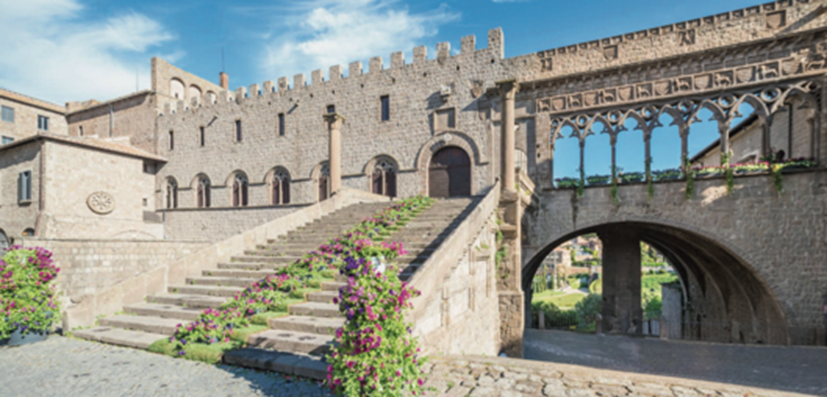
Travelling by car
From Rome: SS Cassia/Cassia bis; or highway A1 exit ‘Orte’ then Superstrada Orte-Viterbo
From Florence: highway A1 exit ‘Orte’ then Superstrada Orte-Viterbo
From Siena: SS Cassia
From Terni/Perugia: Superstrada E45
From Orvieto: SS Umbro Casentinese to Montefiascone, SS Cassia to Viterbo
From Civitavecchia: highway A12 exit ‘Tarquinia’ then SS1bis via Monte Romano
Travelling by train, from Rome
Viterbo has two railway stations: Viterbo Porta Fiorentina and Viterbo Porta Romana. The latter station is only a 5-minute walk from the Santa Maria in Gradi Complex, the venue of the Conference, while the Porta Fiorentina station is about 1.5 Km from it. Viterbo stations are directly connected to Rome by direct regional trains from Roma Ostiense (line "FM3", main stops after Roma Ostiense: Roma Trastevere, Roma S.Pietro, Valle Aurelia, Gemelli, Monte Mario; at Roma Ostiense and Valle Aurelia stations interchange with the metro system). The journey time is about 2 hours. Alternatively, you can take the fast regional train from Rome (various stations) to Orte (journey time is about 40 minutes) and then the bus from Orte scalo to Viterbo (about 30 minutes).
Travelling by plane (and train from Rome Fiumicino airport)
From Rome Fiumicino airport (Leonardo da Vinci) you can take: the Leonardo Express train to Roma Termini and from there the fast regional train to Orte (and then the bus from Orte scalo to Viterbo); or the regional train directly to Orte (and then the bus from Orte scalo to Viterbo); or the regional train to Rome Trastevere and from there the regional train to Viterbo Porta Romana or Porta Fiorentina. Training by bus, from Rome There is a direct service of the company Cotral Lazio from the bus station of Rome (Saxa Rubra) to Viterbo and viceversa.
Information
Train schedules: www.trenitalia.com
Bus connections Roma Saxa Rubra-Viterbo and Orte scalo-Viterbo: www.cotralspa.it/
Bus connection Orte scalo-Viterbo, private service: www.gruppovitertur.it
Local transportation in Viterbo: www.francigena.vt.it
List of Hotels affiliated with the 11th AIEAA Congress, and discounted rates (bed & breakfast):
|
Hotel |
Website |
Daily rate (€/room) |
|
|
Single |
Double |
||
|
Mini Palace Hotel |
60 |
80 |
|
|
Residenza Nazareth |
40 |
55/65 |
|
|
Best Western - Viterbo |
* |
* |
|
|
*15% discount on the best rate available for the selected dates and room |
|||
To benefit of the discount, please indicate that you will be attending the 'Conference of Agricultural Economists - AIEAA' at Tuscia University.
For those who cannot find a suitable accommodation in the affiliated Hotels, or prefer other accommodation types, we recommend searching for B&B options within and around the city centre, since the Conference sessions will be held at the Rectorate premises (Santa Maria in Gradi, near Porta Romana), reachable on foot from the historic city centre in about 15 minutes.
The city of Viterbo and its territory
Viterbo is an ancient city of about 70,000 inhabitants. It is the capital of the homonymous province in northern Lazio, also known as Tuscia or Alto Lazio, and is of Etruscan origin. The historical core of the city began to develop around the year 1000 near the ancient Castrum Viterbii on the Colle del Duomo. In a little more than two centuries, it reached such a remarkable development to contend with the honour and pride of the papal seat in the nearby city of Rome. Indeed, Viterbo is also known as the City of the Popes since in 1257 it was appointed papal seat at the behest of Pope Alexander IV. For about 24 years the Papal Palace in Viterbo hosted and elected several Popes.
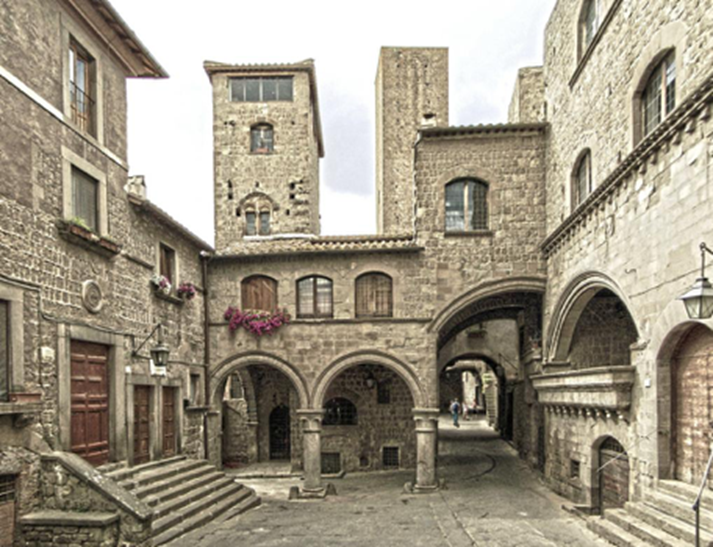
The city boasts one of the largest and most evocative medieval historical centres in Europe. Viterbo is surrounded by high fortified medieval walls and massive towers - built during the 1095 to 1268 period and almost intact - with access from 8 doors. It preserves one of the most important monuments in Lazio with testimonies ranging from the Middle Ages to the entire Renaissance and beyond: aristocratic palaces, churches and cloisters of various eras, elegant fountains in peperino (the typical stone of Viterbo buildings). Viterbo is also famous for the Macchina di Santa Rosa, an illuminated tower, 30 meters high and weighing 52 quintals, which is carried on the shoulders of a hundred men through the streets of the city during a traditional event that takes place every year on the evening of the 3rd of September, in honour of Saint Rose, the city’s patron. In 2013 the event was included by UNESCO among the intangible World Heritage Sites.
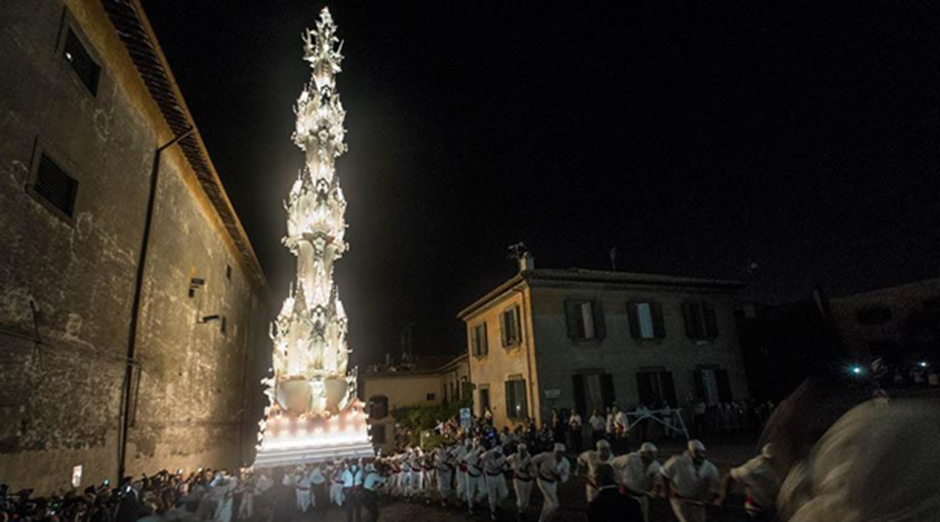
The wonderful area of Viterbo’s province is characterized by an uncontaminated natural environment rich in natural reserves and parks that integrate the rich presence of thermal springs, the consistent historical and artistic testimonies (Etruscan necropolis, villages, districts and medieval and Renaissance emergencies), and the various cultural, religious, gastronomic and folkloric events. This makes the Tuscia Viterbese an attractive pole for tourists.
The landscape is very heterogeneous. It ranges from the mountain and forest areas in the frame of the Cimini mountains to the lakes of Vico and Bolsena, up to the agricultural and coastal areas. For example, it is possible to enjoy the environmental beauty of the natural reserve of Lake Vico, with chestnut trees and ancient oaks, as well as the beautiful coastal stretches in the Maremma, with wide beaches and clean sea water.
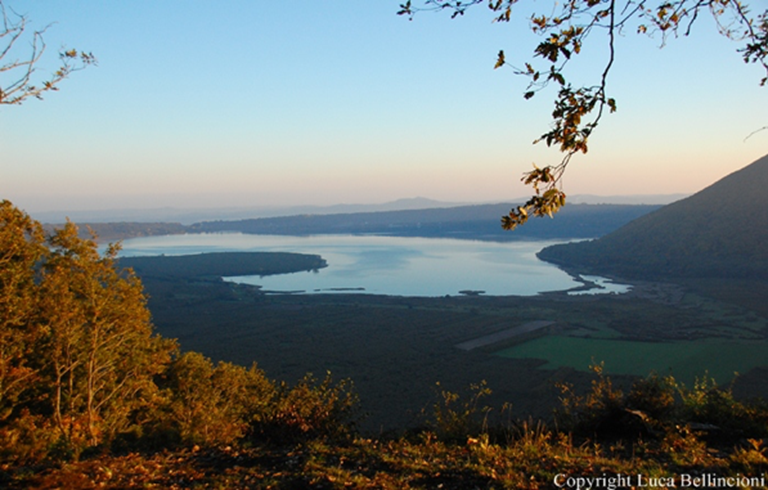
Visitors have many opportunities to make historic-artistic tours. Exemplificative options include: Etruscan necropolis in Tarquinia; Romanian churches in Tuscania; Renaissance villas and gardens, such as the Farnese Palace of Caprarola built by Vignola, or the extraordinary Villa Lante, with adjoining beautiful examples of "Italian gardens"; charmed villages like Civita di Bagnoregio, a small town accessible only on foot, also known as the "city that dies" since it rises on a land subject to continuous erosion and rich in gullies; and surreal places such as the Parco dei mostri at Bomarzo, a labyrinth of gigantic statues and monstrous creatures created in 1552 by Prince Orsini.
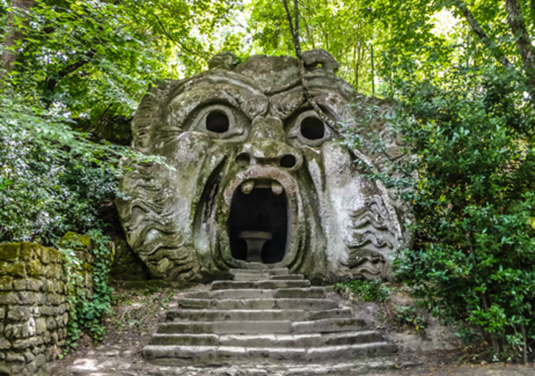
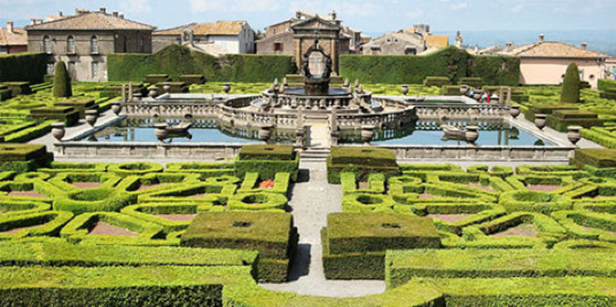
Accomodation
Registration
How to register to the Conference
You can register through the Conference management platform, Conftool.
If you don't have an user account, please click on "Create account and register for conference" and follow the instructions.
If you already have a user account, please log in with your username and password, select “Register as Participant” and follow the instructions.
If you are an author of an accepted paper or poster, please consider that, for presenting your contribution, at least one author of your paper/poster should register to the conference.
Early Registration fees (before April 30)
Regular fee: 260€ (180€ if already member in 2022)
Reduced fee (Ph.D. students, Postdoc): 140€ (100 € if already member in 2022)
Registration fees include the conference lunches, the coffee breaks and the social dinner.
Late Registration fees (after April 30)
Regular fee: 300€ (220€ if already member in 2022)
Reduced fee (Ph.D. students, Postdoc): 200€ (160€ if already member in 2022)
Registration fees include the conference lunches, the coffee breaks and the social dinner.
Information and contacts
For more updated information and contacts, please refer to the conference website at www.aieaa.org or email aieaaviterbo2022@aieaa.org
Deadlines
Important deadlines
Abstract submission by authors: January 31, 2022 (postponed to 6 February 2022)
Notification of acceptance to authors: March 15, 2022
Authors’ registration deadline: May 27, 2022
Full paper/poster submission: May 15, 2022
Keynote speakers
Gianluca Brunori (University of Pisa): Towards a new generation of agrifood policies.
Peter Feindt (Humboldt-Universität – Berlin): How the new CAP can improve farmers resilience in the post COVID era?
Silvia Coderoni (Università Cattolica del Sacro Cuore, Piacenza): Key policy questions for the impact assessment of European agricultural and rural policies.
Sophie Thoyer (UMR CEE-M Centre d’économie de l’Environnement de Montpellier): Enriching the CAP evaluation toolbox with experimental approaches.
Programme
The Program of the AIEAA 2022 Conference can be downloaded HERE.
Pre-conference
The AIEAA 2022 Pre-Conference will be held on June 16, 2022 and will take place in Viterbo, Università della Tuscia, via S.M. in Gradi n° 4.
The Program can be downloaded HERE.